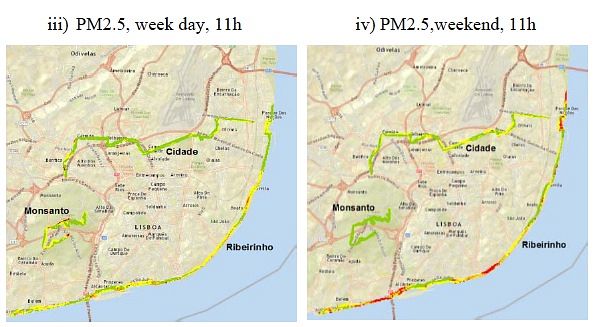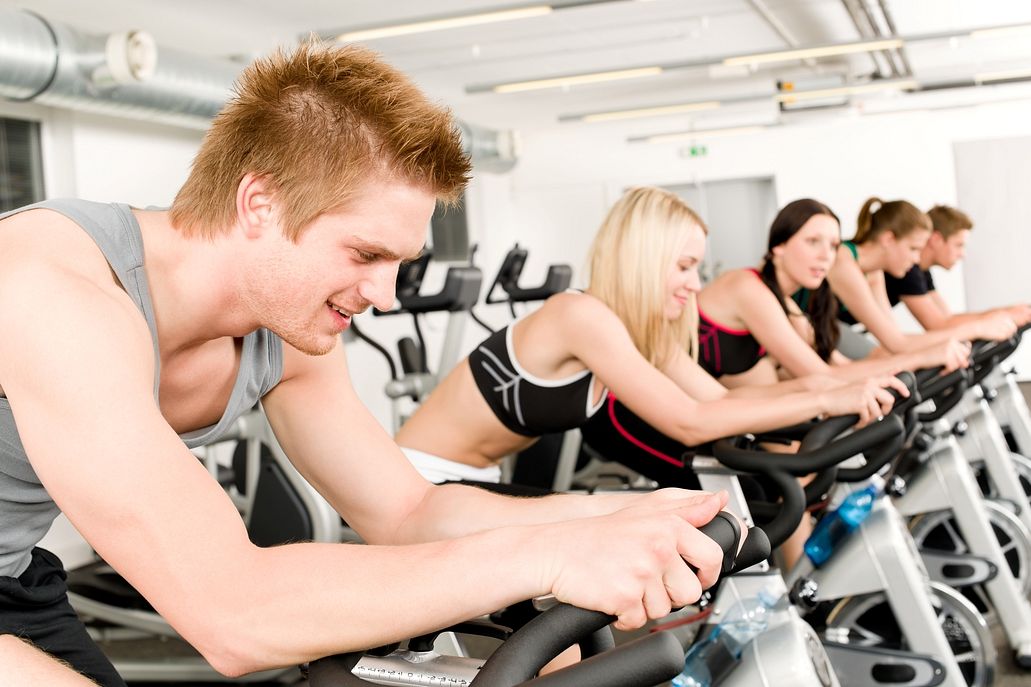Active sport is considered beneficial to your health. But how healthy is the air in fitness centres and along cycle routes? PhD candidate Carla Ramos performed measurements in Lisbon.
In fitness centres, many sources contribute to the air pollution, not least of them are the athletes themselves. During the study eleven fitness centres in Lisbon, Portugal were monitored and three of these became the subject of further research. During the sport activities, the values of CO2, organic compounds and formaldehyde peaked above the national maximum levels. Not only did the athletes produce more CO2 than the ventilation system could deal, but they also increased the level of particles. PhD researcher Carla Ramos (short for Carla Alexandra Almeida Martins Cortês Ramos), who worked as a health & environment consultant, concludes that ventilation systems of fitness centres need to be better adapted to the occupancy and the activity of the visitors. With higher physical activity, athletes not only produce higher levels of CO2 and promote the resuspension of particles from the pavement, but they also inhale larger volumes of and thus increase their dose.


Outdoors
So, it is better outside? To find that out, Carla Ramos measured fine particles (PM2.5, particles smaller than 2.5 micron) and coarse particles (PM10, particles smaller than 10 micron) along three cycling routes in Lisbon. In contrast to PM10, the level of PM2.5, did exceed legal maximum levels. Exhaust from traffic and shipping was the best explanation for the peak values. Ramos concludes that cycling routes should be well planned to reduce health risks for the cyclists. She wrote: ‘Cycle paths should be built far from high-traffic roadways and when not possible should have trees, preferably evergreens, placed between the road and the path.’
When comparing cyclists and motorists, she found that the exposure was higher for car drivers and bus users but, for all the assessed pollutants, the dose was always higher for cyclists because of their increased intake of air.
If a city wants to stimulate the use of bicycles as a sustainable and environmentally friendly form of transport, Ramos stated, it should simultaneously decrease car use, renew the car fleet to less polluting vehicles and plan cycle routes to minimise the exposure of the cyclists to air pollutants.
A similar study, by Dr. Marina de Almeida Silva, focussed on the indoor air quality of elderly care centres. Both studies made use of neutron activation analysis (NAA) for the chemical analysis of trace elements in the air samples. (JW)
• Carla Alexandra Almeida Martins Cortês Ramos, Exposure to air pollutants during physical activity, PhD supervisors Prof. Bert Wolterbeek (AS) and Dr. S. Marta Almeida, Defence: January 19, 2016.
Read also: ‘The Bad Air in Our Gyms’ by Gretchen Reynolds for New York Times, November 5, 2014.



Comments are closed.